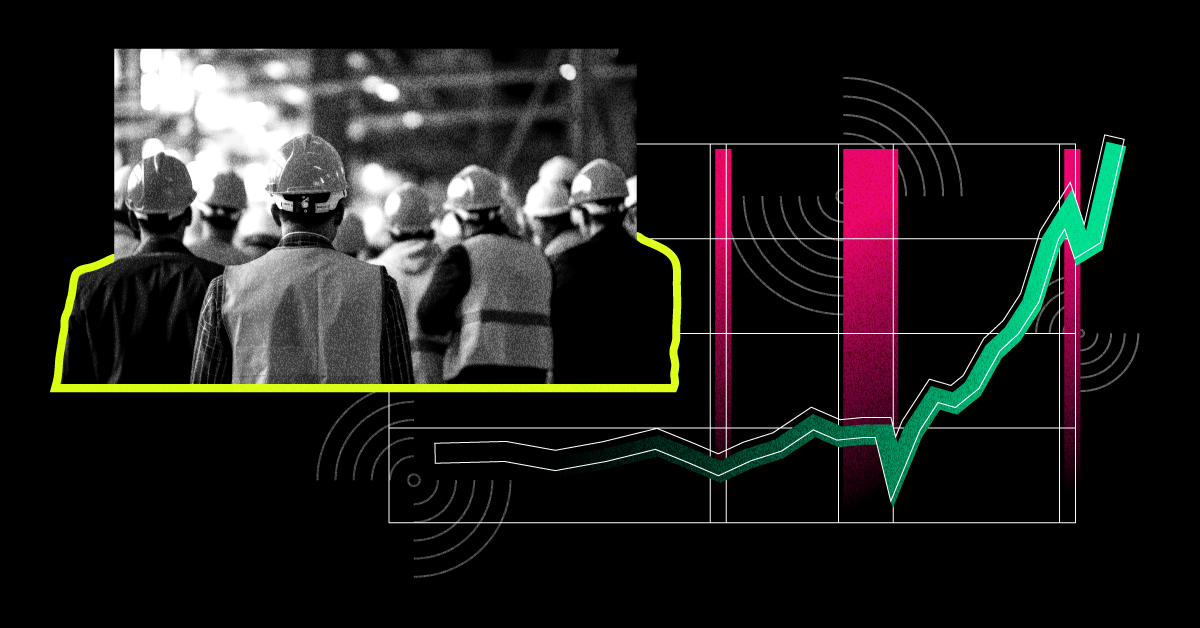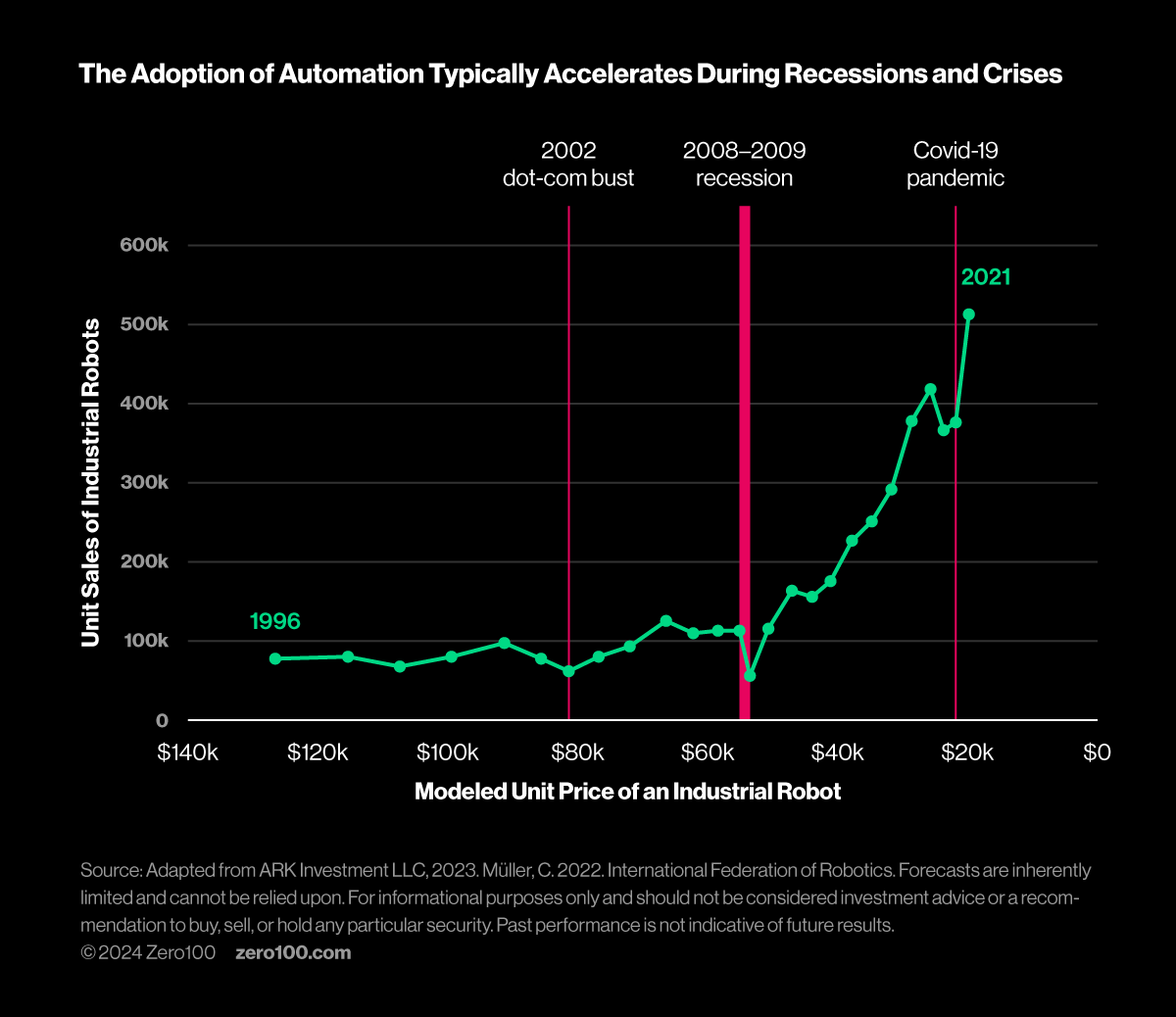
Unions Are Missing Their AI Moment
AI and robotics are positioned to blow up old-school industrial relations, so why are unions reverting to a 1950s playbook? The falling costs of robotics, the rising power and growing scope of AI, and the imminent end of “low-cost labor” are megatrends to watch as this space transforms.
Ford’s Kentucky truck factory recently averted a second strike in a year by agreeing to a local deal for 9,000 United Auto Workers (UAW) members at the plant. Coming hot on the heels of a much bigger agreement reached last October between the UAW and all three major US automakers (Ford, GM, and Stellantis), this latest Ford deal feels more like coercion than collaboration.
Ford CEO Jim Farley sent an ominous message in response to the deal, saying that the company’s relationship with the UAW has “changed” and that future plant location decisions will reflect that. Why invest in factories, like the Kentucky plant, that are highly profitable but can be held hostage by old-fashioned union tactics when Mexico is right across the border and ready to do the job better and cheaper?
More fundamentally, why are unions reverting to a 1950s playbook when AI and robotics are positioned to blow up old-school industrial relations forever?
Shortsighted Labor Leaders
Unions have been bullish about their power since Covid disrupted the industrial labor-capital balance, creating an opportunity to do things differently. I published a prediction in January 2022 about unions getting smart: “Given automation's continued improvement though, I'm betting a new wave of union leaders will start to focus more on skills investment and better market-making for jobs than just wages and benefits.”
Looks like I was wrong. UAW President Shawn Fain sounds more like Jimmy Hoffa than an enlightened orchestrator of the workingman’s future, bragging in a Facebook post last October that “we told Ford to pony up and they did.” The posture is all about political power and the institutional survival of the UAW itself, not the long-term success of blue-collar workers trying to build viable careers in a time of rapid technological advancement.
For perspective, consider the megatrends working against the traditional assembly line operator in high-wage places like the US, Canada, and Europe:
- The falling cost of robotics – The cost/unit of robots is falling over time as experience building, designing, and installing them accumulates. Research originally published in 2019 and updated in 2023 suggests that recessions and crises speed up this dynamic. The wider world of supply chain management has obsessed over “resilience” lately, which implies a still growing appetite for automation to de-risk human-dependent processes. Striking critical assets is no way to calm CFOs considering budgets for yet more robots.

- The rising power and growing scope of AI – Nothing is moving faster than AI right now, and its role supporting machine vision, movement control, and process simulation is exploding. AI learns by doing, which makes it a self-driving flywheel in traditional discriminative AI for anomaly detection and quality control, among many other uses. And when it comes to generative AI, it is a self-driving flywheel for things like work design and predictive maintenance, again, among many other uses. Plus, the data sets training AI for robotics are machine-generated and are, therefore, easier to exploit than the massive unstructured LLMs getting most of the attention these days.
- The imminent end of “low-cost labor”– Supply chain leaders looking for the “next China” have been consistently disappointed as global demographics undermine the economics of replicating China’s epic rise to manufacturing dominance. Business and operations leaders know the answer to scaling manufacturing for long-term growth depends on automation bumping up labor productivity, so why fight it?
Lean into the fact that people can and should co-exist with machines. It will justify higher pay and more career mobility.
Bet on the Data, Not the Muscle
It is a paradox of robotics that automation depends on people as a first-order need for moving from strategic plans to operational scaleup. Operator-level experience with the specific work processes targeted for automation is the starting point for breaking down human work into steps that can be handled by a machine. Amazon and Tesla both approach automation this way, which may help explain their aversion to unions and their success with robotics.
My 2022 prediction missed the mark because I underestimated the cravenness of unions as political entities focused on themselves rather than their members. The real opportunity for organized labor lies in reimagining workers as data creators uniquely positioned to analyze and optimize the minute mechanics of robotics in a system.
Unions could be part of the rise of AI instead of shouting into the wind.